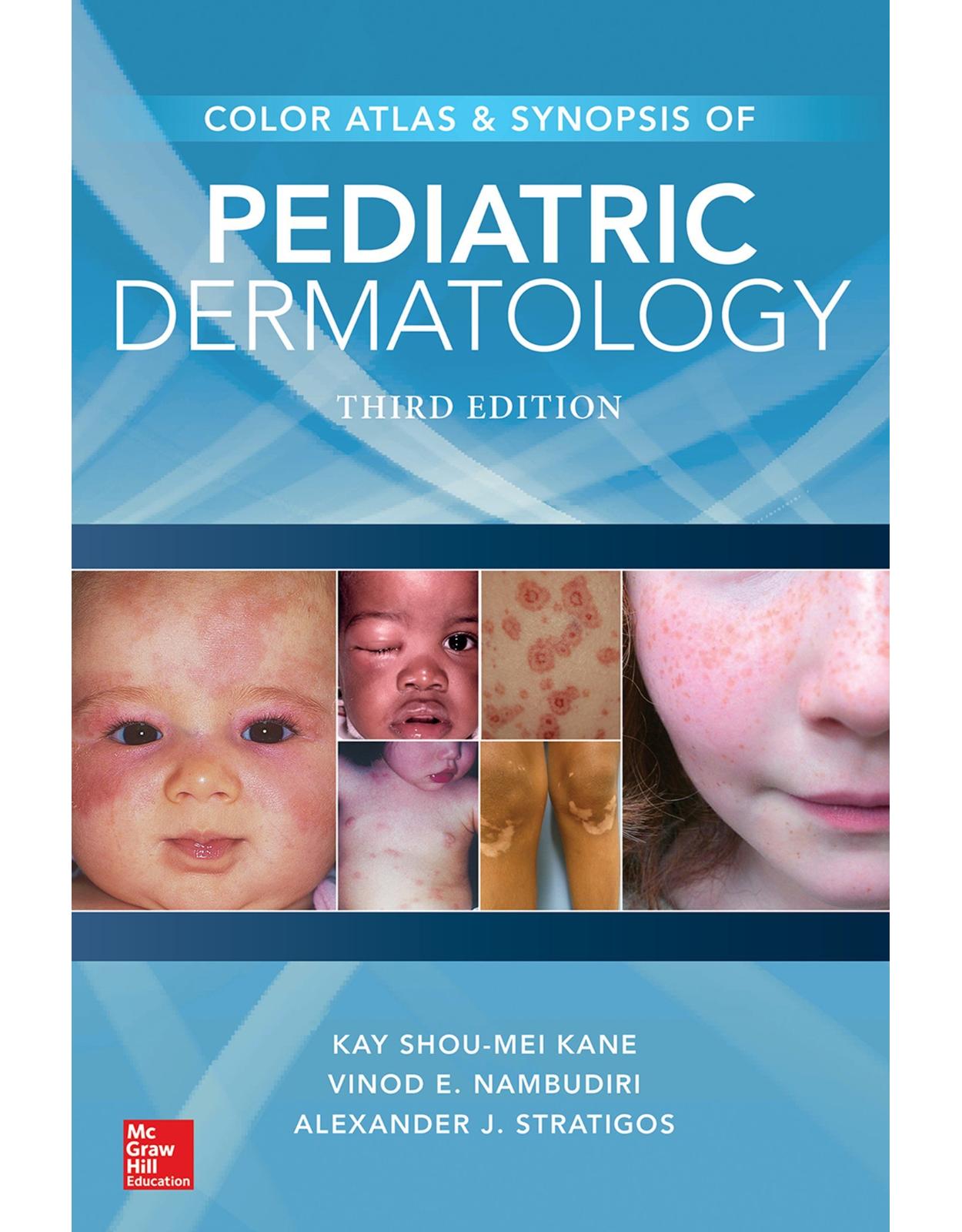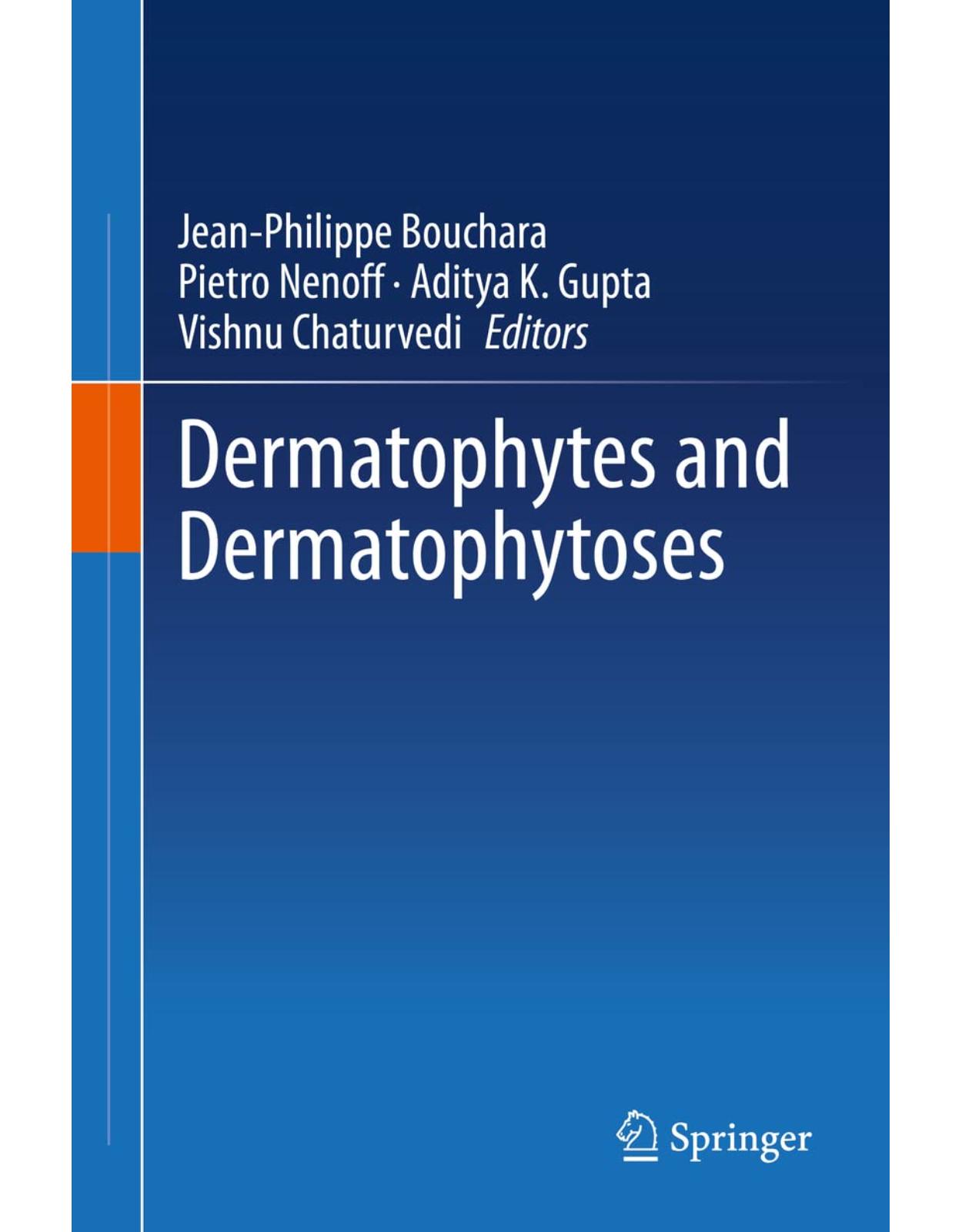
Hair and Scalp Disorders: Medical, Surgical, and Cosmetic Treatments, Second Edition
Livrare gratis la comenzi peste 500 RON. Pentru celelalte comenzi livrarea este 20 RON.
Disponibilitate: La comanda in aproximativ 4 saptamani
Editura: CRC Press
Limba: Engleza
Nr. pagini: 309
Coperta: Hardcover
Dimensiuni: 21.01 x 27.99 cm
An aparitie: 8 Aug. 2018
Description:
A succinct and comprehensive guide examining the treatment of hair and scalp disorders, with a special emphasis on how hair type, morphology, and ethnicity can impact on hair disease and treatment. This updated and revised second edition builds on a successful first edition with additional chapters on dermoscopy, on how technology can best be integrated into clinical practice, and on aging hair.
Table of Contents:
Chapter 1 Human Hair
Introduction
Human Scalp Hair
Function of Human Hair
Structure of Hair
Lanugo Hair
Vellus Hair
Terminal Hair
Cuticle
Cortex
Medulla
Hair Color
Hair Diameter
Terminal Hair Phenotypes
Classification of Hair Phenotypes
Subequatorial African Hair
Asian or Eastern Asian Hair
Indo-European Hair
Australasian Hair
Hair Phenotypes in the Americas
Developments of Human Hair Differences
Evolutionary Advantages of Straight and Curly Hair
Phenotype and “Hair Health”
Root-to-Tip Considerations
Introduction
Healthy Hair
Cosmetic Aspects of Hair
The Hair Mass
Hair in Time and Space
The Process of “Weathering”
Sources of Hair Damage
Causes of Hair Damage
Specific Forms of Hair Damage
Damage from Hair Cutting, Styling, and Shampooing
Cutting
Styling
Shampooing
Tangling
Physical Processes
Environmental Processes
Heat Processes
Chemical Treatments
Hair Coloring and Bleaching
Chemical Curling Permanents
Straightening and Relaxing
Minimizing Damage
General Principles
Chapter 2 Evaluation
Introduction
Hair History
Chemical Damage
Heat Implements
Physical Processes
Environmental Exposure
Hair Examination
Care Recommendations
Summary
Chapter 3 Dermoscopy of Hair and Scalp Disorders (Trichoscopy)
Introduction
Normal Scalp
Inflammatory Scalp Disorders and Parasitic Disorders
Psoriasis and Seborrheic Dermatitis
Pediculosis Capitis
Piedra
Tinea Capitis
Non-Scarring Alopecia
Androgenetic Alopecia, including Female Pattern of Hair Loss
Alopecia Areata
Trichotillomania
Traction Alopecia
Telogen Effluvium
Congenital Triangular Alopecia
Scarring Alopecia
Lichen Planopilaris and Frontal Fibrosing Alopecia
Discoid Lupus Erythematosus of the Scalp
Keratosis Follicularis Spinulosa Decalvans
Folliculitis Decalvans
Dissecting Cellulitis
Hair Shaft Disorders
Monilethrix and Pseudomonilethrix
Trichorrhexis Invaginata (Netherton Syndrome)
Trichorrhexis Nodosa
Pili Torti
Summary
Chapter 4 Photographic Imaging of Hair Loss
Introduction
Global Photography
Camera and Lighting Control
Camera-to-Patient Registration
Macrophotography and Computer-Assisted Hair Measurements
Summary
Chapter 5 Hair Follicle Anatomy in Human Scalp Biopsies
Introduction
Hair Gross Structure
Follicular Morphogenesis
Normal Hair Growth Cycle
Biopsy of Human Scalp
Horizontal versus Vertical Sections
Hair Count in Scalp Biopsy
Hair Follicle Microscopic Anatomy
Infundibulum
Isthmus
Hair Bulb
Outer Root Sheath
Inner Root Sheath
Hair Shaft
Follicular Units
Terminal Anagen Hair
Terminal Catagen Hair
Terminal Telogen Hair
Conclusion
Chapter 6 Nonmedicated Grooming Products and Beauty Treatments
Introduction
Shampoos
Shampoo Formulation
Anionic Detergents
Amphoteric Detergents
Shampoo Diversity
Conditioning Shampoos
Sulfate-Free Shampoos
Oily Hair Shampoos
Dry Shampoos
Ethnic Shampoos
Conditioners
Conditioner Formulation
Quaternary Conditioners
Film-Forming Conditioners
Protein-Containing Conditioners
Silicone Conditioners
Conditioner Diversity
Instant Conditioners
Deep Conditioners
Leave-In Conditioners
Hair Rinses
Hair Coloring
Gradual Dyes
Temporary Dyes
Semipermanent Dyes
Permanent Dyes
Permanent Hair Curling
Alkaline and Alkaline-Buffered Permanent Waves
Exothermic Permanent
Self-Regulated Permanent Waves
Acid and Sulfite Permanent Waves
Permanent Hair Straightening
Lye-Based or Sodium Hydroxide Straighteners
No-Lye Straighteners
Thioglycolate Straighteners
Ammonium Bisulfate Creams
Brazilian Hair Straightening
Chapter 7 Practical Case Scenarios: How to Utilize Products
Introduction
Case Scenarios
Dry Hair
Chapter 8 Dandruff and Seborrheic DermatitisUse of Medicated Shampoos
Introduction
Clinical Features
Definitions
Clinical Presentation
Histopathology
Prevalence
Systemic Disease Associations
Differential Diagnosis
Psoriasis
Irritant Dermatitis
Tinea Capitis
Pityriasis amiantacea
“Personal Observation of Silver Scalp”
Other
Anthropology of Dandruff
Etiology of Dandruff
Malassezia
Inflammation
Humoral Immunity
Innate Immune System
Lipases
Hyperproliferation
Nature of Flaking
Barrier Function
Treatment
History
Efficacy Testing Methods
FDA Monograph
Keratolytics
Antipruritics
Anti-Malassezia Agents
Tar
Zinc Pyrithione
Selenium Sulfide
Ketoconazole
Ciclopirox
Other
Shampoo Comparison Studies
Gels, Lotions, Creams
Dispelling Shampoo Myths
Anti-Inflammatory Agents
Topical Corticosteroids
Calcineurin Inhibitors
Other
Patient Management
Summary
Chapter 9 Alopecia Areata
Introduction
Clinical Features
Scope of the Problem
Pathophysiology
Histology
Immunology
Genetics
Nerves
Treatments
Topical Sensitizers
Steroids: Topical, Intralesional, Oral
Minoxidil: Topical and Oral
Anthralin
Light Therapy (UVA, UVB, Laser)
Biologics
Combination Therapies
Other Treatments
Future and Evolving Medical Treatments
Treatment of Alopecia Areata: This Author’s Approach
Patchy Disease
Extensive Disease
Summary
Chapter 10 Androgenetic Alopecia
Introduction
Clinical Features
Male Androgenetic Alopecia
Female Androgenetic Alopecia
Pathology
Etiology
Androgens
Genetics
Prevalence
Management
Diagnosis
Counseling
Treatment
Men
Minoxidil
Finasteride
Minoxidil versus Finasteride
Dutasteride
Surgery
Women
Minoxidil
Antiandrogens
Prostaglandin Analogs
Iron
Surgery
Low-Level Light Therapy
Summary
Chapter 11 Telogen Effluvium
Introduction
Diagnosis of TE
History
Physical Exam
Special Tests
Scalp Biopsy
Screening Laboratory Tests
Differential Diagnosis
Management and Treatment
General Approach
Inciting Factors
Hormones
Nutritional Influences
Calories
Protein
Amino Acids
Essential Fatty Acids
Iron
Zinc
Vitamin A
Biotin (Vitamin H)
Vitamin D
Systemic Disease
Surgery
Psychological Stressors
Medications and Supplements
Psychotropics
Anticoagulants
Cardiovascular Drugs
Antimicrobials
Retinoids
Other Medications
Additional Treatments
Scalp Inflammation and TE
Minoxidil (Rogaine)
Antiandrogens
Botanical Nutrients
Camouflage and Cosmetic Aids
Surgery
Platelet-Rich Plasma
The Future
Prognosis
Conclusion
Bibliography
Chapter 12 Cicatricial Alopecia
Introduction
Background
Mechanisms
The Sebotrophic Hypothesis
Stem Cells and Immunology
Peroxisomes and Lipid Metabolism
Retinoids
Mitochondrial Dysfunction
Epidemiology
Clinical Presentation
Lymphocytic Cicatricial Alopecias
Neutrophilic Cicatricial Alopecias
Mixed Cicatricial Alopecias
Histopathology
Classification
Treatment
Medical
Lymphocytic
Systemic Therapy
Neutrophilic
Mixed
Surgical
Recommended Websites
Chapter 13 Structural Hair Abnormalities
Introduction
Weathering
Examination of the Hair Shaft
Classification of Hair Shaft Disorders
Structural Defects with Increased Fragility
Trichorrhexis Nodosa
Congenital Trichorrhexis Nodosa
Acquired Trichorrhexis Nodosa
Proximal Trichorrhexis Nodosa
Distal Trichorrhexis Nodosa
Circumscribed Trichorrhexis Nodosa
Trichorrhexis Nodosa Associated with Other Syndromes
Monilethrix
Clinical Features
Genetics
Diagnosis
Associations
Treatment
Pseudomonilethrix
Pili Torti
Clinical Features
Isolated Pili Torti
Pili Torti as Part of Other Defined Syndromes (Table 13.3)
Pathophysiology
Treatment
Netherton Syndrome (Trichorrhexis Invaginata)
Clinical Features
Diagnosis
Trichothiodystrophy
Clinical Features
Diagnosis
Treatment
Pili Annulati (Ringed Hair)
Clinical Features
Pathophysiology
Investigations
Pseudo Pili Annulati
Woolly Hair and Woolly Hair Nevus
Associations
Uncombable Hair Syndrome (Spun-Glass Hair)
Investigations
Straight Hair Nevus
Clinical Features
Associations
Loose Anagen Syndrome
Pathophysiology
Clinical Features
Investigations
Pohl–Pinkus Lines
Peripilar Casts (Pseudo Nits)
Pili Multigemini
Trichonodosis
Bubble Hair
Trichostasis Spinulosa
Bird’s-Nest Hair and Dreadlocks
Summary
Chapter 14 Scalp Prostheses: Wigs, Hairpieces, Extensions, and Scalp-Covering Cosmetics
Introduction
Hair Types
Human Hair
Synthetic Hair
Wigs and Hairpieces
Wig Construction
Hairpieces
Options for Men
Options for Children
Hair Extensions
Methods of Attachment
Braids
Potential Problems Associated with Wigs and Hair Extensions
Hair Cosmetics
Options for Eyebrow and Eyelash Loss
Conclusion
Chapter 15 Hair Transplantation for the Dermatologist
Social Impact of Hair Loss
Why Hair Transplants Work
The Procedure: Past to Present
The Original Technique, Standard Punch Grafting
Combination Mini-Micro Grafting
Follicular Unit Transplantation
Traditional Strip Method FUT
Follicular Unit Extraction Method
Scalp Reductions, Flaps, and Tissue Expanders
Factors That Determine a Succesful Procedure
Meeting Expectations of Naturalness
Meeting Expectation of Density
Establishing Realistic Expectations and Patient Selection
Practical Applications of Hair Transplantation
Male Pattern Baldness
Female Pattern Hair Loss
Abnormally High Female Hair Line
Eyebrows
Eyelashes
Beards and Mustaches
Scar Tissue Caused by Physical Trauma
Primary Cicatricial Alopecia
Ethnic Considerations
Patients of African Descent
Asians
Adjunctive Therapy and New Horizions
Finasteride
Dutasteride
Minoxidil
Low Level Laser Therapy
Platelet-Rich Plasma
ACell MatriStem
Cell Therapy and Cloning
Chapter 16 Alternative Treatments for Hair Loss
Introduction
Herbal Remedies
Saw Palmetto (Serenoa repens)
Pygeum (Prunus africana)
Stinging Nettle Root
Ginkgo Biloba
He Shou Wu (Polygonum multiflorum)
Rosemary (Rosemarinus officinalis)
Prickly Ash Bark (Zanthoxylum clava-herculis)
Horsetail (Equisetum arvense)
Elderberry (Sambucus nigra)
Shea Butter
Dietary Supplements
Iron
Taurine and Catechins
Marine Proteins
L-Cystine
L-Lysine
Biotin
Pantothenic Acid
Vitamin B6
Copper
Zinc
Selenium and Other Trace Elements
Soy
External Treatments
Shampoos and Conditioners
Ketoconazole
Caffeine
Melatonine
Devices and Other Procedures
Low-Level Laser
Mesotherapy
Platelet-Rich Plasma
Microneedling
Camouflage and Scalp Micropigmentation
Mind-Altering Approaches
Summary
Chapter 17 Hirsutism and Hypertrichosis
Introduction
Hirsutism
Introduction
Epidemiology
Etiology
Excess Androgen Production and Circulating Androgen Levels
Increased Sensitivity of the Hair Follicle to Androgens
Evaluation
History
Physical Examination
Laboratory Evaluation
Management
Physical/Cosmetic Treatments
Bleaching
Systemic Therapies
Hypertrichosis
Etiology
Clinical Features
Management
Chapter 18 Light-Assisted Hair Removal and Hair Growth
Introduction
Biology of the Hair Follicle
Hair Cycle
Types of Hair
Hair Color
Depth of Hair Follicle
Target of Laser Hair Removal
Theory of Selective Photothermolysis
Extended Theory of Selective Photothermolysis
Characterization of Light and Laser Energy
Wavelength
Pulse Width
Spot Size
Fluence
Cooling of the Epidermis
Timing of Cooling
Methods of Cooling
Hair-Removal Light Sources
Lasers
Intense Pulsed Light
Photodynamic Therapy
Home-Use Hair Removal Lasers and Light Sources
Guidelines for Laser Hair Removal
Indications
Patient Selection
Pretreatment Care
Choice of Settings
Spot Size
Pulse Width
Fluence
Treatment Endpoints
Post-Treatment Care
Complications
Transient Adverse Effects
Pigmentary Alterations
Permanent Adverse Effects
Paradoxical Hypertrichosis
Low-Level Laser Therapy and Hair Growth
Conclusion
Chapter 19 Allergic Contact Dermatitis
Introduction
Reaction Types
Clinical Presentation
Epidemiology
Contact Allergens
Hair Dyes
Synthetic Dyes
Metallic Dyes
Plant-Based Dyes
Bleaches
Permanent Waves
Cold Perms
Acid Perms8
Neutral Perms
Hair Straighteners
Shampoos
Conditioners
Leave-in Hair Products (Hairspray, Foams, Gels)
Fragrances and Botanical Agents
Preservatives
Methylchloroisothiazolinone (MCI)/Methylisothiazolinone (MI)
Formaldehyde and Formaldehyde Releasers
Methyldribromoglutaronitrile
Others
Emulsifiers and Vehicles
Sunscreens
Hair Removers
Hair Growth Promoters
Wigs and Hair Accessories
Diagnosis
Patch Testing
Patch Testing to Hair Dyes
Treatment of Scalp ACD
Chapter 20 Psychodermatoses Involving Hair
Introduction
Factitial Hair Loss
Delusions of Parasitosis (Ekbom’s Syndrome)
Body Dysmorphic Disorder
Chapter 21 Scalp Infections and Infestations
Scalp Infections
Tinea Capitis
Historical Background
Epidemiology
Pathogenesis
Clinical Findings
Diagnosis
Differential Diagnosis
Treatment
Griseofulvin
Terbinafine
Itraconazole
Fluconazole
Voriconazole
Adjunctive Therapies and Measures
Kerion
Piedra
Epidemiology
Clinical Findings
Diagnosis
Differential Diagnosis
Treatment
Scalp Infestations
Pediculosis Capitis
Historical Background
Epidemiology
Louse Features
Clinical Findings
Diagnosis
Differential Diagnosis
Treatment
The Problem of Resistance
Permethrin
Pyrethrins
Malathion
Lindane
Ivermectin
Spinosad
Benzyl Alcohol
Other Agents
Treatment Failures
Screening
Adjunctive Control Measures
Summary
Chapter 22 Sources of Alopecia Information for Physicians and Patients
Introduction
Disease State Information
American Academy of Dermatology
National Alopecia Areata Foundation
Cicatricial Alopecia Research Foundation
Patient Education and Support
National Alopecia Areata Foundation
Cicatricial Alopecia Research Foundation
International Society of Hair Restoration Surgery
Financial Assistance for Cranial Prostheses
Locks of Love
NAAF Ascot Fund and Marketplace
Research
North American Hair Research Society
Alopecia Areata Treatment Development Program
Clinical Trials
Chapter 23 Approach to the Alopecia Patient
Introduction
Preparing for the Visit
The Provider
The Patient
Patient History
Scalp Symptoms
Hair Care
Past Medical History
Medication History
Stress
Family History
The Hair Loss Examination
Diffuse Alopecia
Part-Width Assessment
The Hair-Pull Test
Remainder of the Examination for Diffuse Hair Loss
Patchy Hair Loss
Scalp Dermoscopy (Trichoscopy)
The Diagnosis
The Scalp Biopsy
The Laboratory Workup
Educating the Patient
Chapter 24 Hair Aging and Anti-Aging Strategies
Introduction
The Hair Aging Phenotype
Rare Premature Aging Syndromes
Androgenetic Alopecia
Menopause
Effects of Smoking and Ultraviolet Radiation
Senescent Alopecia
Graying
Hair Weathering
Interventions in Aging Hair
Care for Aging Hair
Possibilities for Reversal of Hair Graying
Possibilities for Reversal of Hair Loss during Aging
Value of Nutritional Treatment
Photoprotection of Hair and Scalp
Future Directions
Summary
Index
| An aparitie | 8 Aug. 2018 |
| Autor | Amy J. McMichael, Maria K. Hordinsky |
| Dimensiuni | 21.01 x 27.99 cm |
| Editura | CRC Press |
| Format | Hardcover |
| ISBN | 9781842145920 |
| Limba | Engleza |
| Nr pag | 309 |












Clientii ebookshop.ro nu au adaugat inca opinii pentru acest produs. Fii primul care adauga o parere, folosind formularul de mai jos.